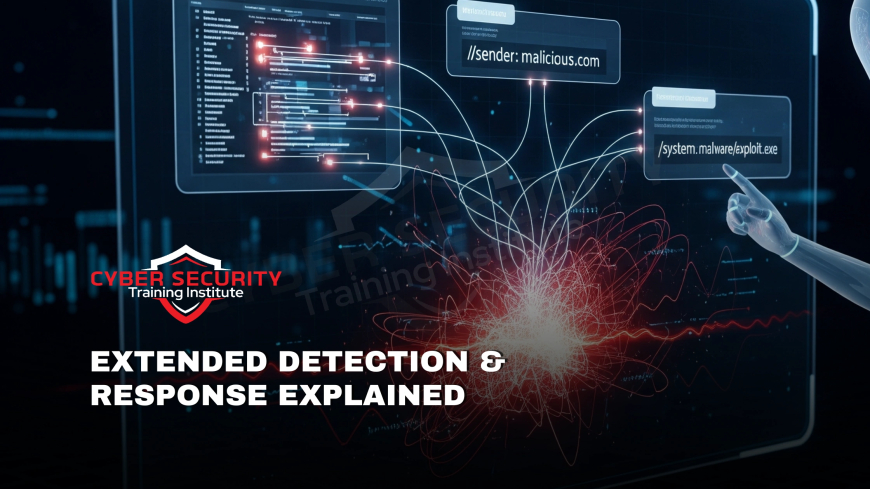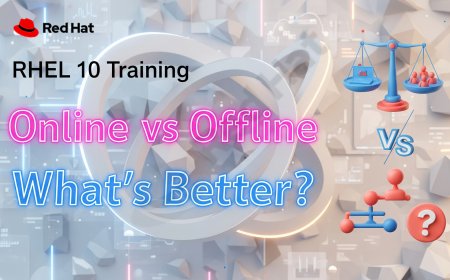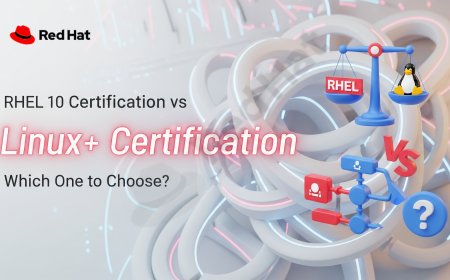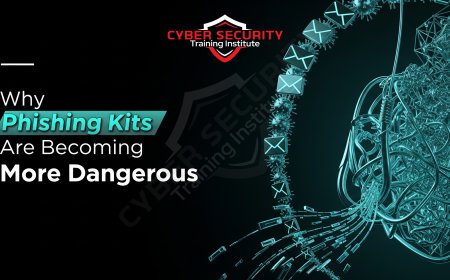What Is Extended Detection and Response (XDR) and How Does It Differ from SIEM?
Imagine you're the IT manager at a mid-sized company, and one morning, you get an alert about suspicious activity on your network. Is it a false alarm, or the start of a major breach? In today's world, where cyber threats evolve faster than ever, tools like Extended Detection and Response (XDR) and Security Information and Event Management (SIEM) are your best friends—or at least, they should be. But what's the difference, and why does it matter? As someone who's spent years digging into cybersecurity trends, I've seen how these technologies can make or break a company's defenses. XDR is like having a smart detective that not only spots clues but also chases down the culprit, while SIEM is more of a vigilant librarian cataloging every event. In this post, we'll break it all down simply, so even if you're new to the field, you'll get why XDR is gaining buzz in 2025. We'll explore definitions, differences, real examples, and more, helping you decide what's right for your setup. Let's jump in and demystify these acronyms.

Table of Contents
- What Is Extended Detection and Response (XDR)?
- What Is Security Information and Event Management (SIEM)?
- Key Differences Between XDR and SIEM
- Benefits of XDR
- Benefits of SIEM
- Limitations and Challenges
- Real-World Use Cases
- How to Implement XDR or SIEM
- Future Trends in XDR and SIEM for 2025 and Beyond
- Conclusion
- FAQs
What Is Extended Detection and Response (XDR)?
Extended Detection and Response, or XDR, is a relatively new kid on the cybersecurity block, but it's making waves for good reason.
Unlike older tools that work in isolation, XDR breaks down those "silos" by integrating information from multiple sources.
Why "extended"? Because it extends beyond just one area, like endpoints, to cover the entire ecosystem. This holistic approach helps security teams see the big picture, reducing the time it takes to investigate and fix issues. In 2025, with threats like ransomware and AI-powered attacks on the rise, XDR's ability to provide real-time visibility and quick action is a game-changer for businesses of all sizes. It's not just about detecting problems; it's about responding smarter and faster to keep your data safe.
To put it simply for beginners: Imagine your cybersecurity as a puzzle. Traditional tools give you pieces from one box, but XDR combines pieces from multiple boxes to complete the picture quicker. Vendors like CrowdStrike, Palo Alto Networks, and Microsoft are leading the charge, offering XDR solutions that integrate seamlessly with existing setups.
What Is Security Information and Event Management (SIEM)?
Now, let's shift to SIEM, which stands for Security Information and Event Management. This technology has been around longer than XDR—think of it as the veteran in the field.
A SIEM system aggregates these logs in real-time, applies rules to detect suspicious patterns, and generates alerts for security teams to investigate. For instance, if there's a spike in failed login attempts from an unfamiliar IP address, SIEM might flag it as a potential brute-force attack. It also helps with compliance by keeping detailed records for audits, which is crucial for industries like finance or healthcare.
SIEM tools often include dashboards for visualization, correlation engines to link related events, and reporting features. Popular ones include Splunk, IBM QRadar, and Elastic SIEM. While powerful, SIEM relies heavily on human analysts to interpret alerts and take action, which can lead to overload if there are too many false positives—alerts that turn out to be harmless.
In essence, SIEM is great for long-term monitoring and forensic analysis, helping you understand what happened after an incident. But in a fast-paced threat landscape, it sometimes falls short on automated response, which is where newer tools like XDR come in to complement or even evolve it.
Key Differences Between XDR and SIEM
While both XDR and SIEM aim to bolster cybersecurity, they differ in scope, functionality, and approach.
One big difference is data sources: SIEM pulls from logs across the enterprise, but XDR focuses on telemetry—real-time data streams—from endpoints, clouds, and networks for deeper insights.
Response is another key area: SIEM alerts you, but XDR can act, like isolating a compromised device. Deployment-wise, SIEM can be on-premises or cloud-based, but XDR is mostly cloud-native for scalability.
Here's a comparison table to make it clearer:
| Aspect | XDR | SIEM |
|---|---|---|
| Focus | Threat detection and automated response | Log management and alerting |
| Data Sources | Endpoints, networks, cloud telemetry | Logs from devices and apps |
| Automation | High, with AI-driven responses | Limited, mostly rule-based |
| Use Case | Real-time threat hunting | Compliance and forensics |
These differences mean XDR is often seen as an evolution of SIEM, not a replacement.
Benefits of XDR
XDR shines in providing unified visibility, cutting through the clutter of multiple tools.
Automation is a huge plus—XDR can quarantine devices or block IPs without human input, minimizing damage. It's also scalable for cloud environments, ideal for modern businesses. Cost-wise, it streamlines operations, potentially lowering the need for large security teams.
For small businesses, XDR democratizes advanced security, offering enterprise-level protection without complex setups. Overall, it boosts efficiency and resilience against sophisticated attacks.
Benefits of SIEM
SIEM's strength lies in its depth for log management and compliance.
Customization is key— you can tailor rules to your environment, making it versatile for diverse IT setups. It provides broad visibility, aggregating data from hundreds of sources for historical insights.
For forensics, SIEM is invaluable, allowing teams to reconstruct incidents post-breach. It's mature technology with proven track records, making it reliable for large enterprises.
Limitations and Challenges
No tool is perfect. For XDR, integration can be tricky if your tools aren't compatible, leading to vendor lock-in.
SIEM struggles with alert fatigue from too many notifications and requires skilled analysts for tuning.
Both face challenges in evolving threats, needing constant updates. Organizations must weigh these against their needs.
Real-World Use Cases
In practice, XDR has proven its worth in ransomware scenarios. For example, it can detect encryption attempts across endpoints and networks, then isolate affected systems swiftly.
SIEM shines in compliance-heavy fields like finance, where it logs transactions for audits. A bank might use SIEM to detect insider threats through log patterns over time.
Hybrid uses are common: XDR for immediate response, SIEM for deep analysis.
How to Implement XDR or SIEM
Starting with XDR? Assess your environment, choose a vendor like SentinelOne, and integrate step-by-step.
For SIEM, focus on log sources, set up rules, and monitor dashboards. Tools like Splunk offer guided setups.
- Define goals: Detection vs. compliance?
- Pilot test: Try in a small segment.
- Monitor and tune: Adjust based on feedback.
Implementation takes time but pays off in stronger security.
Future Trends in XDR and SIEM for 2025 and Beyond
In 2025, XDR is evolving with AI enhancements for predictive analytics and zero-trust integration.
SIEM is getting "agentic"—AI agents automating more tasks.
Trends include IoT security expansion and regulatory pushes for better detection. Expect more open architectures for flexibility.
Conclusion
We've covered a lot ground here, from defining XDR as a proactive, integrated threat hunter to SIEM as a reliable log keeper, and their key differences in scope and automation. XDR offers speed and AI smarts, while SIEM excels in compliance and depth—often, the best approach is using them together. With cyber threats ramping up in 2025, understanding these tools empowers you to build robust defenses. Whether you're a beginner or seasoned pro, remember: The right choice depends on your needs. Stay vigilant, invest wisely, and your digital world will be safer for it.
FAQs
What does XDR stand for?
XDR stands for Extended Detection and Response, a cybersecurity platform that integrates data from multiple sources for better threat handling.
What is the main purpose of SIEM?
SIEM's main purpose is to collect and analyze security logs to detect anomalies and ensure compliance.
How does XDR use AI?
XDR uses AI to correlate data, reduce false alerts, and automate responses to threats.
Is XDR a replacement for SIEM?
No, XDR complements SIEM; it focuses on response while SIEM handles log management.
What data does XDR collect?
XDR collects telemetry from endpoints, networks, clouds, and more for comprehensive visibility.
Why is SIEM important for compliance?
SIEM stores detailed logs, enabling audits and reports required by regulations like GDPR.
Can small businesses use XDR?
Yes, cloud-based XDR solutions are scalable and affordable for small businesses.
What are false positives in SIEM?
False positives are harmless alerts that waste time; SIEM can generate many without tuning.
How does XDR handle ransomware?
XDR detects patterns across systems and can automatically isolate infected devices.
What's the cost difference between XDR and SIEM?
XDR might have higher initial costs due to integration, but it saves on long-term operations.
Does SIEM automate responses?
SIEM mainly alerts; automation is limited compared to XDR's built-in features.
What vendors offer XDR?
Vendors like CrowdStrike, Microsoft, and Palo Alto Networks provide XDR platforms.
How is XDR cloud-native?
XDR is designed for cloud environments, offering scalability and real-time data processing.
Can SIEM integrate with XDR?
Yes, many setups use SIEM for logs and XDR for advanced detection and response.
What future trend involves AI in SIEM?
Agentic SIEM uses AI agents to automate analysis and reduce manual work.
Why choose XDR over SIEM?
Choose XDR for faster, automated threat response in dynamic environments.
What is telemetry in XDR?
Telemetry is real-time data streams from devices, used for immediate threat insights.
Does XDR support zero-trust?
Yes, XDR aligns with zero-trust by continuously verifying and responding to risks.
How does SIEM help in forensics?
SIEM provides historical logs to reconstruct incidents after they occur.
What's a common challenge with XDR implementation?
Integrating with existing tools can be complex, potentially leading to vendor lock-in.
What's Your Reaction?
 Like
0
Like
0
 Dislike
0
Dislike
0
 Love
0
Love
0
 Funny
0
Funny
0
 Angry
0
Angry
0
 Sad
0
Sad
0
 Wow
0
Wow
0
















